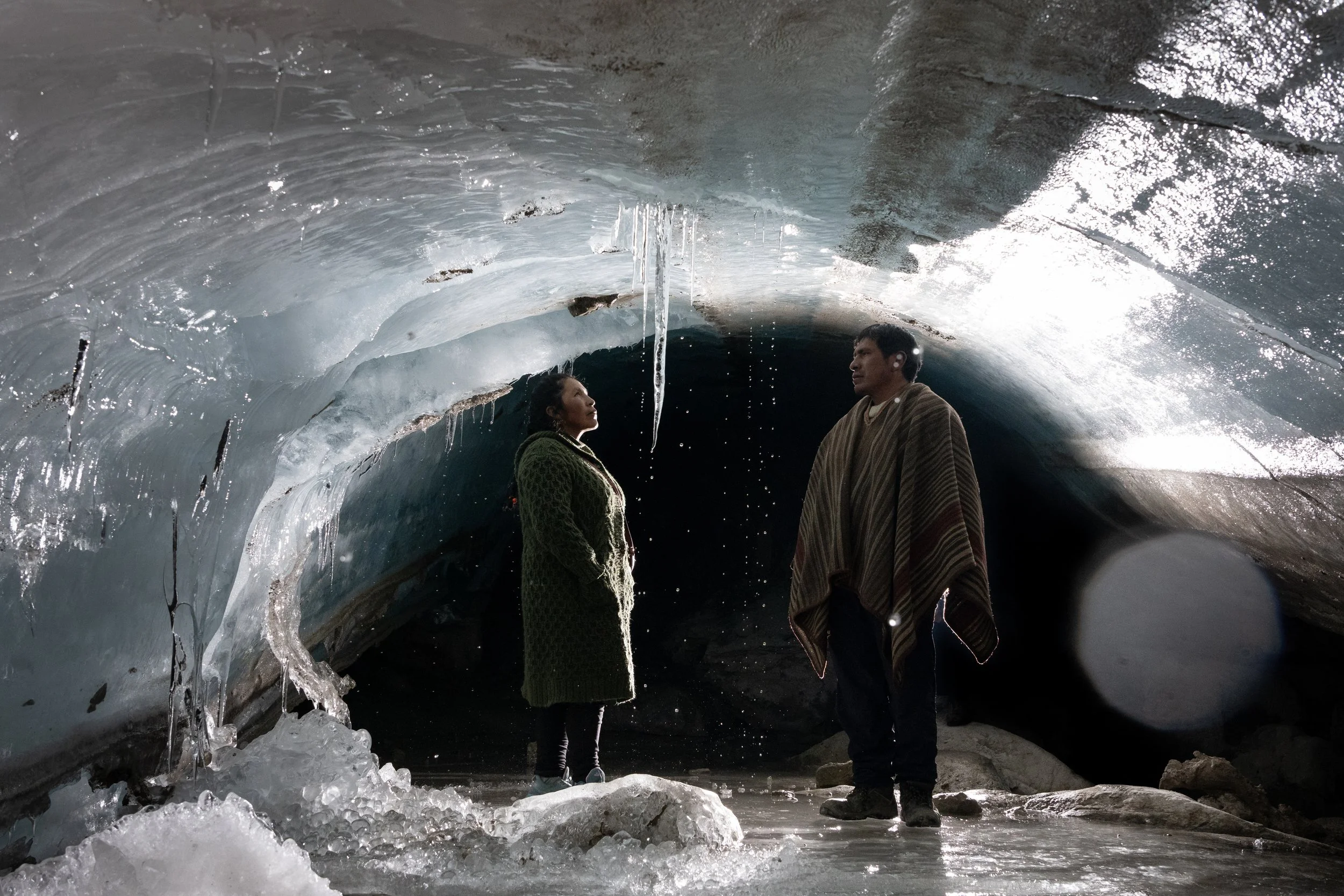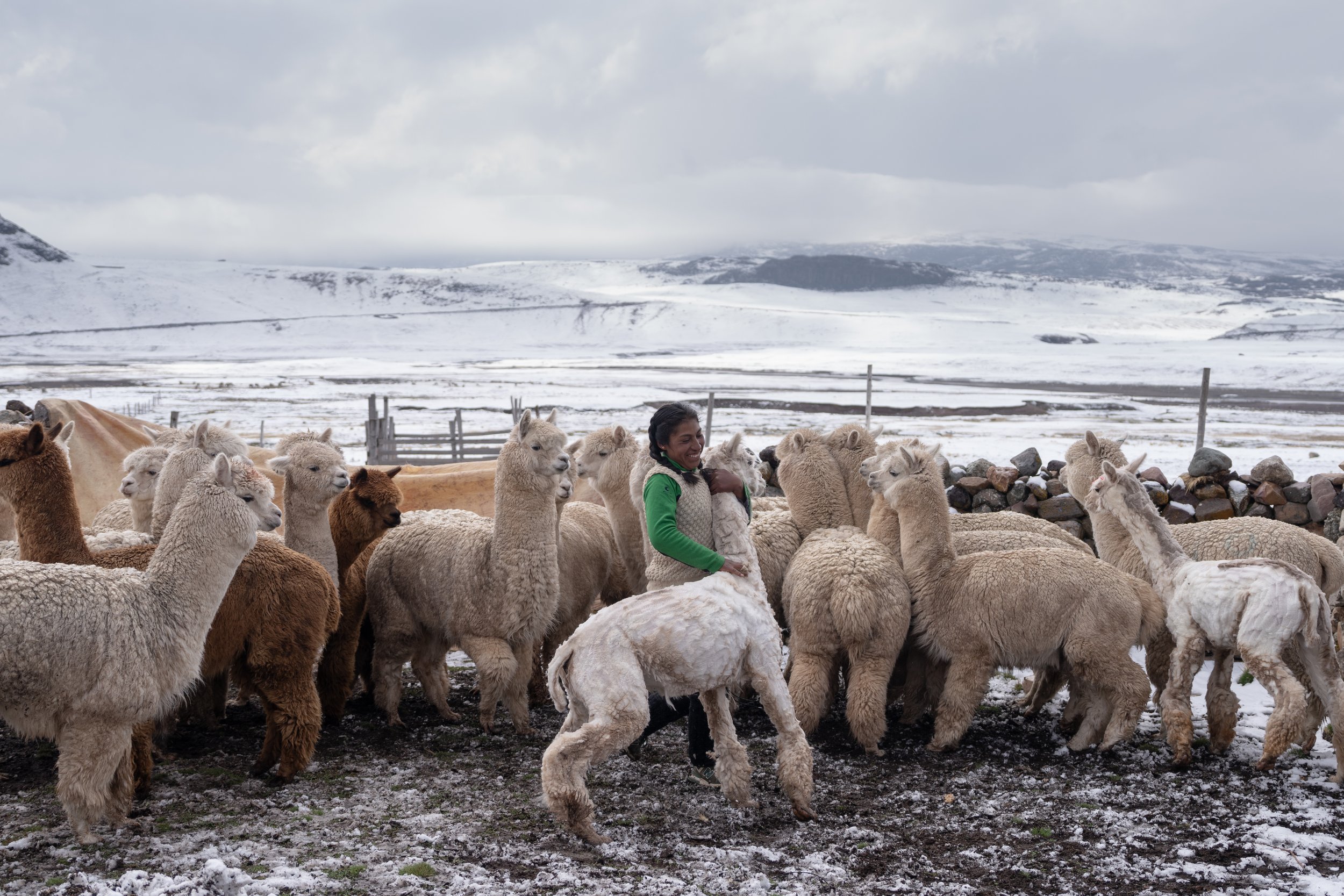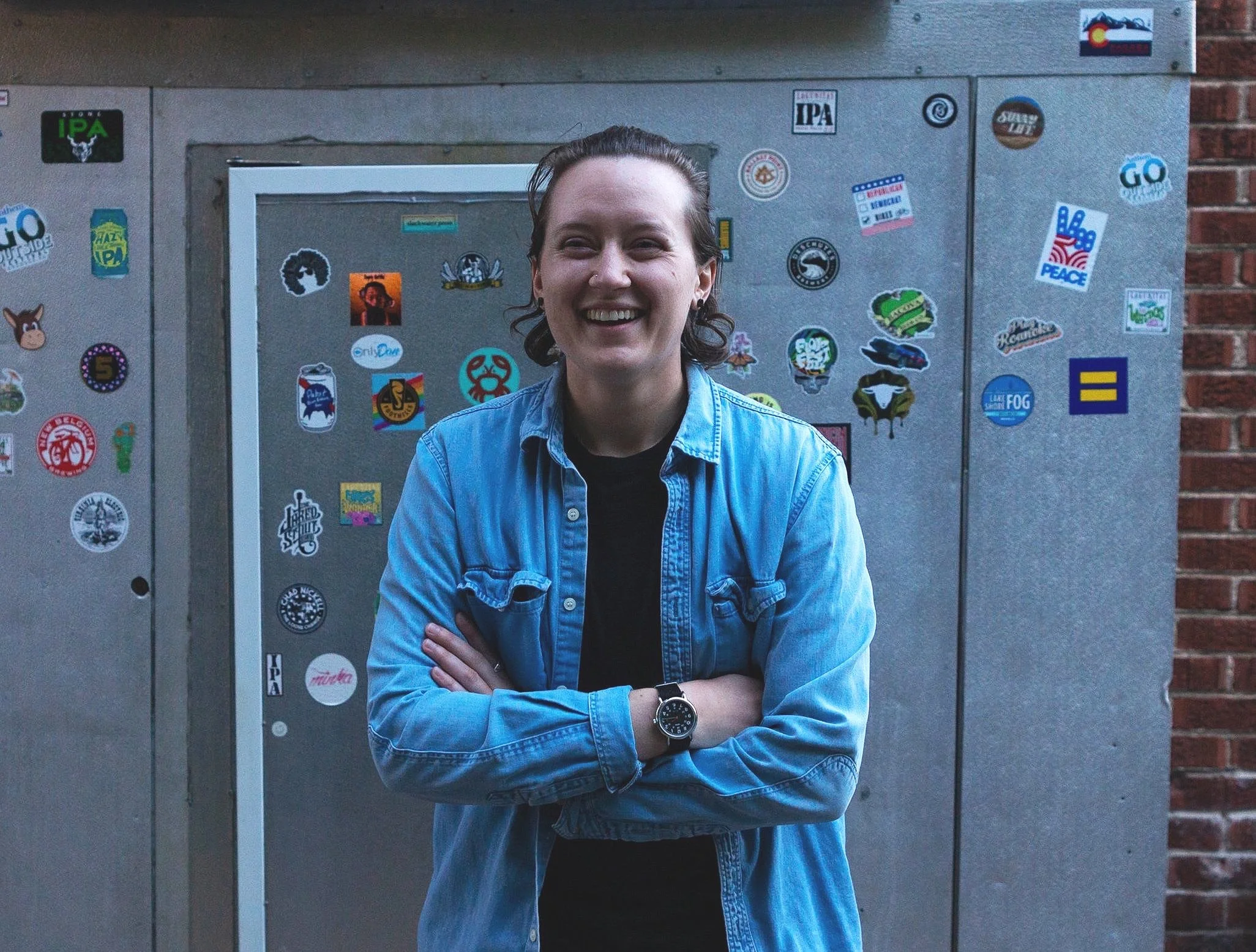Meet Peruvian Photographer Angela Ponce
IMAGES BY ANGELA PONCE
WORDS BY NEHAA BIMAL
EDITED BY TAMARA BLAZQUEZ HAIK
Angela Ponce is an award-winning documentary photographer and photojournalist who grapples with social issues in the Latin American context. Angela is one of our Revolutionary Storyteller Grant recipients whose project “Guardians of the Glaciers” was part of a virtual exhibition on the Photographers Without Borders platform. In a behind-the-scenes interview, Angela shares her experience photographing the impacts of climate change on the Quelccaya Ice Cap—the world’s second largest tropical glacier located in Peru—and the Quechua community that live by it.
Portrait of Angela Ponce. Image by Victor Zea.
Can you share a bit about your work as a photojournalist and the topics you cover?
My main work is centered around Peru, but in the last three years, I started covering other countries inside Latin America. My work focuses a lot on the narratives in the Andes and climate change issues like mining activities, water contamination and, of course, my project on the glaciers in the Peruvian Andes.
How were you able to establish connections with Indigenous communities in Peru, such as the Quechua community, in order to tell their stories?
I live in the city but my family used to live in the Andes for many generations. My grandmother was a Quechua speaker and Quechua is the mother tongue of people in the Andes. I always wanted to know how my ancestors used to live and I always wanted to return to the Andes, so photography was a very good excuse. I found that many of the stories that my grandmother told me came to life on my travels. So I started traveling more and discovered different things like the Chaccu ritual where people in the Andes shear wool from the sheep.
I discovered that I was not only documenting their stories as a witness, but as someone who—if my family did not move to the city, would have been living in the Andes with my culture and with my traditions.
Luis Quispe (78) gathers the wool of an alpaca. The main economic activity is the breeding of camelids, from which leather, wool, and fiber are obtained for making clothing, crafts, or other items. Image by Angela Ponce.
What are some big lessons you have learned while documenting these community stories?
There is a lot of romanticization about the Andes and their traditions, so I just want to be respectful because I feel that ancestral knowledge has to be transmitted with a lot of transparency in order to be real. All of these stories helped me better understand the Andean world because it's different reading about it in anthropological studies and then actually hearing about it from the people living in this world.
When I was working on the Guardians of the Glaciers, one of the elders of the community told me that before I start making photos, I have to ask for permission from the glacier. Maybe for some photographers or visual artists, asking permission from the mountains, rivers and rocks may not make sense, but for me, with my family background, I understood this. When you wake up and see the snow caps and the rivers, all of these creations are not just nature. It is like seeing your ancestors. Each time I travel, I learn a little bit more and every experience is a life experience.
The Quispe, one of the most traditional ayllus (family in Quechua) of the place, have been present in the community for generations. Like the other families that live in this territory, they struggle to continue their traditional lifestyle and keep their ancestral customs alive. Image by Angela Ponce.
For Guardians of the Glaciers, what was the experience documenting this project, especially given the altitude and weather conditions?
It was hard, as it is a high altitude. To get to the glacier, first I have to take a plane from Lima, Peru to Cusco which is about two hours. Then, we travel by car for seven to eight hours. Because there is no road, we have to walk for the last stretch of travel for about ten hours with our tents, mountain gear, camera and tripod, amongst other essentials. I could not have done this without the people of the community because they have a lot of knowledge about the mountains and the glacier. For example, when we felt sick because of the altitude, they gave us coca leaves. For headaches, they carry dry potatoes and Mapacho tobacco, a cigarette used in sacred rituals.
Getting there is a challenge physically and mentally, but there is also a mix of emotions because the glacier is beautiful. It is a giant but the giant is dying because it's disappearing. And people of the community tell the stories of how they used to go to the glacier when they were children, referring to it as their “grandfather.” But now, it is like their grandfather is dying in front of their eyes.
Members of the Quispe family pose for a portrait in a cave on the Quelccaya glacier. Image by Angela Ponce.
“The stories they share are really moving because even though around the world, people care about the planet or know that climate change is real and is happening right now, it is different when climate change directly impacts you.”
One of the quotes from Guardians of the Glaciers is of a community member called Teresa who is seen observing the snowy ice caps saying, “My dad always made offerings to the snowy mountain. He told me it would be the end of the world when the snow melted.” Can you tell us more about those conversations about climate change?
People in these communities didn’t use scientific words like ‘climate change’ when I was in conversation with them but they don’t need to use it. They know that something is happening and express this with their own traditions. They would say, “Now we only see black mountains,” and this is because when the glacier retreats, the land turns black and once it is black, the ice will never return. So even though they don't know the scientific explanation, what is happening is clear to them.
The stories they share are really moving because even though around the world, people care about the planet or know that climate change is real and is happening right now, it is different when climate change directly impacts you. It's not the same for people who live in the Andes in these remote places because they don't have the same tools or resources to face the effects of climate change.
When you, your family and your economy depend on this glacier because your people raise animals for a living and the animals no longer have the conditions to live there and are dying,it is different. The Quechua people don’t have any other economical activity to depend on because the pressure is so high due to the attitude that they can’t grow anything else, it is impossible. They don’t have seasons anymore because of climate change and every month feels like winter. In their shoes, the impact of climate change feels stronger.
When I heard their testimonies, I could see—in the time that I spent there—that the living conditions were very hard and I just can't imagine how they’ll be living there all year round.
Rosa Higuera (66) washes her hair with natural herb water in the patio of her house. Although the glacier is the most important source of water that feeds the entire region, people living near it do not have access to basic services such as drinking water and electricity. Image by Angela Ponce.
What does it mean for you to be a PWB Revolutionary Storyteller and be able to share these important stories to the world?
There are two parts to being a revolutionary storyteller. A revolutionary storyteller wants to tell stories that matter in a way that they can create change, big or small. Some people or organizations are looking for a platform to tell what's happening around the world, what's happening in our communities, and what's happening in our countries. The second part is that it is a big responsibility. As storytellers, you know that the camera has power and with this power, you can put a light on important issues. You have the power to tell a story and do it well if you make the effort.
An alpaca prepares to be released after shearing. Peru is home to 70% of the world's alpaca population, however the retreat of the glacial mass affects its continuity. Image by Angela Ponce.
“There are two parts to being a revolutionary storyteller. A revolutionary storyteller wants to tell stories that matter in a way that they can create change, big or small.”























